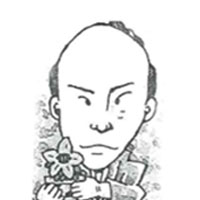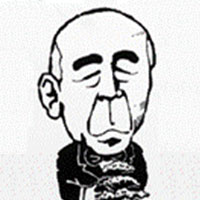Persons involved in development of Kurume Azalea
Motozo Sakamoto(1785-1854) Retainer of the Kurume feudal clan

He planted Kirishima azaleas and desired them in widely variety of colors. He sowed seeds of Kirishima azaleas, but these did not germinate. One day he found seedlings of Kirishima azaleas on moss in his garden and contrived a method of germinating seeds on moss. Thereafter he produced new varieties having different color of flower from that of existing flower of Kirishima azaleas. This is the beginning of Kurume azaleas. He attempted to spread cultivation of Kurume azaleas by sharing his new varieties with pupils interested in the same subject and initiating them into the method of germinating seeds. As a result, the number of Kurume azalea varieties reached about 200 at the end of the Edo period.
Kijiro Akashi(the first)(1842-1920) Owner of Akashi Korakuen nursery

He established Akashi Korakuen nursery in 1873. He collected Kurume azaleas possessed by Motozo Sakamoto and produced new varieties. He named this azalea group Kurume tsutsuji. In Taisho era, he put effort into exports of Kurume azaleas thanks to cooperation by Yokohama Nursery Company. He published a horticultural book Kurume tsutsuji shi in 1905. In this book, he recorded the story of Motozo Sakamoto and 154 varieties of Kurume azalea bred in the Edo period.
Ernest Henry Wilson(1876-1930) Plant explorer of the Arnold Arboretum
He travelled to Japan in the pursuit of conifers, azaleas, and Japanese cherries in 1914. He first encountered Kurume azaleas in Hatagaya distinct of Shibuya, Tokyo. In 1917, he again encountered Kurume azaleas at Yokohama Nursery company and started to think visiting the birthplace of Kurume azaleas. His wish came true in 1918. He visited Akashi Korakuen nursery in Kurume, Fukuoka and purchased 48 varieties of Kurume azalea and two varieties of Edo kirishima azalea. He brought them to the Arnold Arboretum. This collection was called 'Wilson 50' at present.




